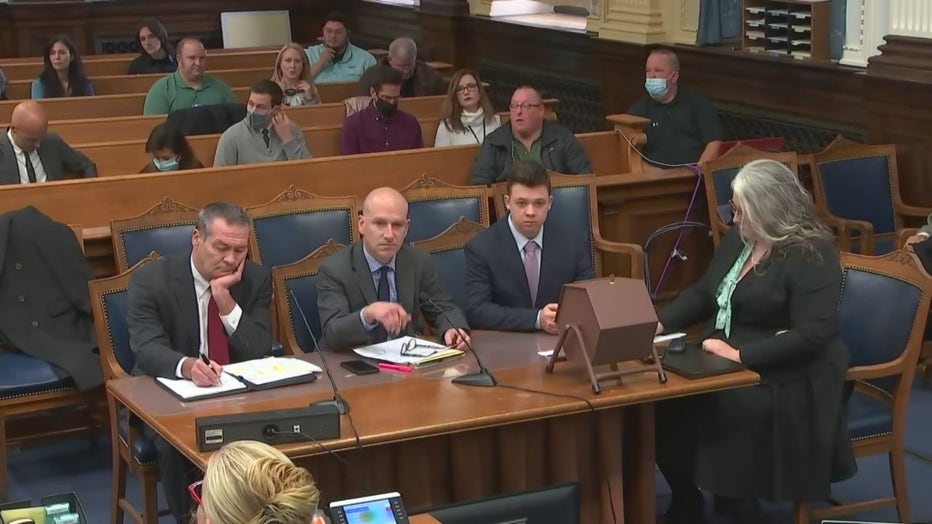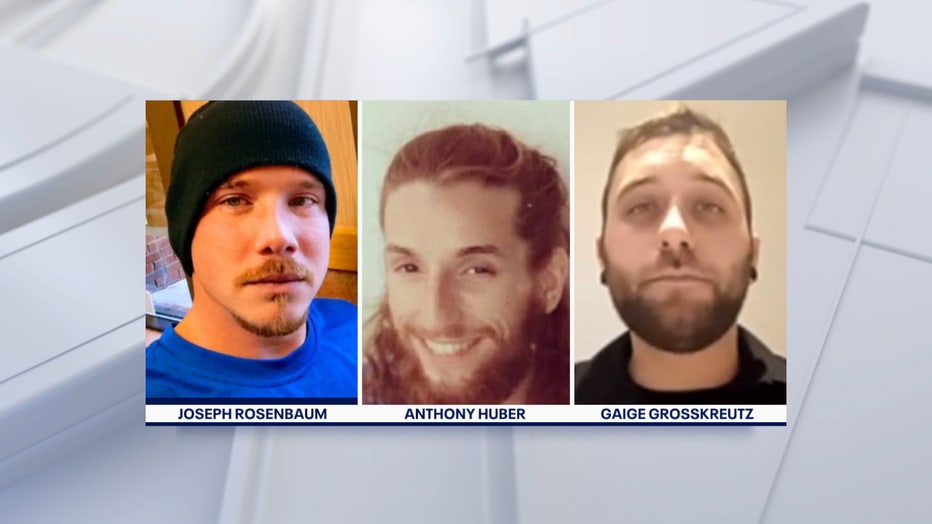Kyle Rittenhouse trial: Jury wraps 1st day of deliberations

Kyle Rittenhouse trial: Jury wraps 1st day of deliberations
The jury at Kyle Rittenhouse's murder trial deliberated a full day on Tuesday without reaching a verdict over whether he was the instigator in a night of bloodshed in Kenosha or a concerned citizen who came under attack while trying to protect property.
KENOSHA, Wis. - The jury at Kyle Rittenhouse's murder trial deliberated a full day on Tuesday without reaching a verdict over whether he was the instigator in a night of bloodshed in Kenosha or a concerned citizen who came under attack while trying to protect property.
The case went to the anonymous jury after the judge, in an unusual move, allowed Rittenhouse himself to play a minor role in the selection of the final panel of 12 people whose job was to decide his fate.
Rittenhouse reached into a raffle drum and drew six numbered slips that determined which of the 18 jurors who sat through the case would deliberate and which ones would be dismissed as alternates. The task is usually performed by a court clerk, not the defendant.

Kyle Rittenhouse selects juror numbers from tumbler
The jury began deliberating Tuesday around 9:15 a.m. and was dismissed by the judge shortly before 6 p.m. after they did not reach a verdict. Jurors will return Wednesday morning to continue their work.
"It is for you to determine the defendant is guilty or not guilty," Circuit Judge Bruce Schroeder told jurors Tuesday. "Each count is charged as a separate crime, and you must consider each one separately."

Kenosha County judge explains why Kyle Rittenhouse selected jurors to be dismissed from tumbler
Kyle Rittenhouse selected juror numbers from a tumbler on the first day of deliberations. It was a process to dismiss six of the jurors. Kenosha County Judge Bruce Schroeder explained the process.
The case is now in the hands of 12 jurors. Of the original 20, two jurors were dismissed and the other six are alternates – standing by in another room of the courthouse while the group of 12 deliberates.
"There have been rare instances, sometimes in cases you’d recognize by their importance, where jurors have been restored to the jury after having been dismissed," Schroeder said.
The 12-person jury was given 36 pages of instructions, which include the option to weigh lesser charges for two of the five counts Rittenhouse is facing.
Rittenhouse, 18, faces life in prison if convicted as charged for using an AR-style semi-automatic rifle to kill two men and wound a third during a night of protests against racial injustice in Kenosha in the summer of 2020. He faces five total counts.

Rittenhouse testified he acted in self-defense, while prosecutors argued he provoked the violence. The case has become a flashpoint in the U.S. debate over guns, racial-justice protests, vigilantism and law and order.
The jury appeared to be overwhelmingly white. Prospective jurors were not asked to identify their race during the selection process, and the court did not provide a racial breakdown.
As the jury deliberated, dozens of protesters — some for Rittenhouse, some against — stood outside the courthouse. Some talked quietly with those on the other side, while others shouted insults. One woman could be heard repeatedly calling some Rittenhouse supporters "white supremacists."
SIGN UP TODAY: Get daily headlines, breaking news emails from FOX6 News
Wisconsin Gov. Tony Evers, who faced criticism over his response to the Kenosha protests in 2020, urged calm as the jury deliberated. He announced last week that 500 members of the National Guard would stand ready for duty in Kenosha if needed.
"Regardless of the outcome in this case, I urge peace in Kenosha and across our state," Evers tweeted. He added: "I ask all those who choose to assemble and exercise their First Amendment rights in every community to do so safely and peacefully."
The large protests that some had anticipated did not materialize during the trial's testimony phase. On most days, a small group of demonstrators gathered on the courthouse steps, and the high fence that protected the building during last year's unrest is gone.
Schroeder told reporters he was inclined to let the jurors decide how late in the day to allow deliberations to go, and he suggested he would give the news media around an hour to get to court after the jury sends word it has reached a verdict.
Rittenhouse was 17 when he went Kenosha from his home in Antioch, Illinois, in what he said was an effort to protect property from rioters in the days after a Black man, Jacob Blake, was shot by a white Kenosha police officer.
In a fast-moving series of clashes in the streets, Rittenhouse shot and killed Joseph Rosenbaum, 36, and Anthony Huber, 26, and wounded Gaige Grosskreutz, now 28.

Kyle Rittenhouse defense team
During closing arguments Monday, prosecutor Thomas Binger said that Rittenhouse was a "wannabe soldier" who set the deadly chain of events in motion by bringing a rifle to a protest and pointing it at protesters just before he was chased.
But Rittenhouse lawyer Mark Richards countered that Rittenhouse was ambushed by Rosenbaum.
Rittenhouse testified that Rosenbaum chased him down and made a grab for his rifle, causing him to fear the weapon was going to be used against him. His account of Rosenbaum's behavior was largely corroborated by video and some of the prosecution's own witnesses.

As for Huber, he was gunned down after he was seen on video hitting Rittenhouse with a skateboard. And Grosskreutz admitted he had his own gun pointed at Rittenhouse when he was shot.
In his instructions to the jury, Schroeder said that to accept Rittenhouse’s claim of self-defense, the jurors must find that he believed there was an unlawful threat to him and that the amount of force he used was reasonable and necessary.
FREE DOWNLOAD: Get breaking news alerts in the FOX6 News app for iOS or Android

